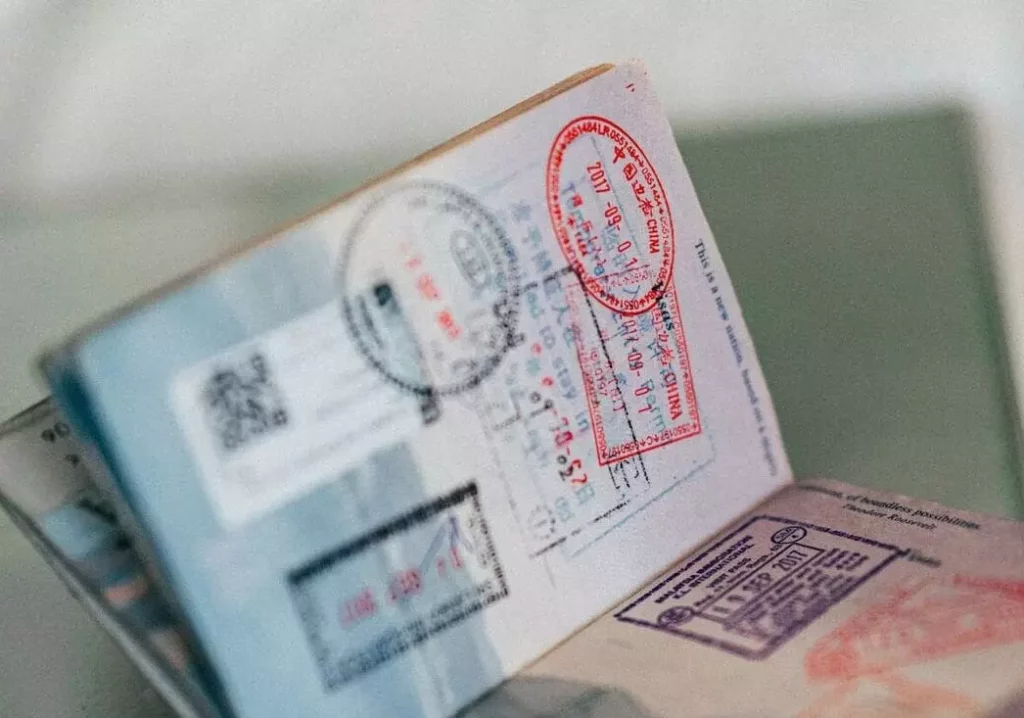In the past few years, Portugal has become a popular place to relocate for many Americans. The appeal of this country on the west coast of the Iberian Peninsula is clear: Portugal has a great climate, rolling hills, delicious food, and beautiful beaches. It also a high quality of life, often ranking highly in international living indices.
Another reason why many Americans are making this move is that Portugal also offers a more affordable lifestyle than many places in the US.
In this article, we'll compare the cost of living in Portugal vs. the cost of living in the USA. This article should give you an idea of how Americans moving to Portugal are able to save money and avoid the high cost of living in the US.
Is Portugal an affordable place to live?
The cost of living in Portugal largely depends on your lifestyle preferences and your location in the country.
Naturally, living in the city center of a major city such as Lisbon or Porto will be considerably more expensive than moving to one of the country's rural areas. Whether you intend rent or buy a property, you'll spend more money on housing in these cities, and this will likely be your largest expense.
On the whole, though, Americans moving to Portugal from the US will find that the country is exceptionally affordable, with a low cost of living in comparison to many other countries in the European Union.
How much money do I need to live on in Portugal?
For a couple, it's possible to live comfortably on around €1,700 per month. If you move to Lisbon city center, for example, you'll need to budget around €2,000 per month or more.
For those with a high budget, it's possible to live comfortably anywhere in the country with a budget of €3,000 or more.
Living Cost: Portugal vs the USA – What to Expect

In 2024, consumer prices (excluding rent) in the US are 56.2 percent higher than in Portugal, according to Numbeo.
Meanwhile, consumer prices, including rent, are 62.5 percent higher in the US than they are in Portugal.
If you're looking to find a job Portugal, it's worth bearing in mind that the average monthly salary in Portugal is lower than the average monthly salary in the US.
Portugal Cost of Living vs US: Capital City Comparison 2024
To give you a more specific comparison, let's take a look at the difference between the cost of living in Portugal's capital city, Lisbon, and the capital city of the US, Washington DC.
Consumer prices in Washington, DC, are 66.4 percent higher than in Lisbon (without rent).
Consumer prices including rent in Washington, DC, are 77.9 percent higher than in Lisbon.
Rent prices in Washington, DC, are 96.1 percent higher than in Lisbon.
Living Expenses in Portugal vs USA
Grocery prices

Everyday staples like bread, fruits, vegetables, and locally produced meats tend to be considerably cheaper in Portugal. For instance, a kilogram of apples might cost €1.70 ($1.80) in Portugal, while the same amount could set you back $4.84 (€4.22) in the US.
As another example, a dozen eggs cost around €2.32 in Portugal, while you'd pay about $4.60 in the US. A loaf of fresh white bread in Portugal costs about €1.23, while it will cost roughly $3.23 in the US.
Also, items such as olive oil are locally produced in Portugal, they can be relatively inexpensive.
Alcohol prices
In Portugal, local wine varieties tend to be very affordable, thanks to the country's rich wine-producing tradition. Imported or specialty items can be pricier in Portugal because of transport and import fees, and brand-name products might also be more expensive compared to the US. Overall, though, Portugal has a clear advantage when it comes to grocery affordability.
A bottle of decent red or white Portuguese wine can range from just €5 to €10. Even their internationally renowned Port wine can be found at reasonable prices, with a basic ruby Port starting around €15.
Similarly, domestic beers like Sagres or Super Bock cost around €1-€2 per bottle, while domestic spirits like Aguardente can be found for €15-€20 a bottle. However, imported beers and spirits may be pricier, ranging from €2-€4 per bottle of beer and €30 or more for imported spirits, depending on the brand.
In the US, alcohol prices can vary substantially depending on the state you're in. States with stricter alcohol laws or higher taxes can significantly impact the final cost. For example, a bottle of domestic beer in a state with low alcohol taxes might cost around $2; in a state with high taxes, it could be closer to $4. Similarly, a bottle of domestically produced wine in the US could range from $10 to $20, while imported wines can easily reach $20 or more.
Just like Portugal, imported spirits in the US face tariffs and duties, making them more expensive than domestic options. A typical bottle of domestic liquor in the US might cost $25- $30, while an imported brand could be $40 or more.
Eating out costs
Portugal:

Price range: A typical meal at a mid-range restaurant in Portugal will cost around €20-€40 per person, excluding drinks. This could include an appetizer, main course, and sometimes dessert. Local specialties and traditional Portuguese dishes are often more affordable compared to international cuisine in tourist areas.
Examples:
A snack at a cafe: Pastel de Nata (custard tart) and coffee - €2-€3
Lunch at a traditional tasca: Bacalhau à Brás (codfish dish) with a glass of wine - €12-€15
Dinner at a mid-range restaurant: Grilled dourada (sea bream) with vegetables and a bottle of Portuguese wine - €30-€40 per person
USA:
Dining options: Similar to Portugal, the US offers a wide range of dining options. However, prices can vary greatly depending on location and type of establishment.
Price range: A meal at a mid-range restaurant in the US can range from $20 to $50 or more per person, excluding drinks. This could include an appetizer, main course, and sometimes dessert. Fast food restaurants typically offer the most affordable option, with meals costing around $10- $15.
Examples:
Grab-and-go lunch: Sandwich and a drink at a fast-food chain - $8-$12
Casual lunch at a diner: Burger and fries with a soft drink - $15-$20
Dinner at a mid-range restaurant in a major city: Steak with sides and a glass of wine - $40-$50 per person.
Transportation costs in Portugal vs USA
Portugal
Public transportation: Public transport in Portugal is a budget-friendly way to get around. A single ticket on Lisbon's metro system costs around €1.80, with day passes available for around €6.70. Regional train travel can vary depending on distance, but fares typically start around €10-€15. For longer distances, a cross-country train ticket can cost between €20 and €50 .
Car ownership: Portugal's compact size makes car ownership less necessary, especially in urban areas with good public transport. However, gas prices in Portugal are generally higher than the US average, currently around €1.80 per liter (approximately $8.22 per gallon). Tolls on highways and parking fees can also add to the cost of car ownership.
USA
Public transportation: Public transportation options in the US vary significantly across different cities and states. Major metropolitan areas like New York City or Chicago offer extensive and reliable public transit systems with fares ranging from $2.50 to $3.50 per ride. However, in many suburban and rural areas, public transportation is limited or nonexistent, making car ownership essential.
Car ownership: Fuel prices in the US can be lower than Portugal, with a national average around $3.50 per gallon. However, car ownership costs in the US typically include additional expenses like car insurance (averaging around $1,500 annually) and maintenance, which can add up significantly
Generally, car insurance costs in the US are likely to be more expensive than in Portugal. Here's a breakdown:
Portugal:
- Averages range from €150 to €350 annually (€150 for third-party liability, €350 for fully comprehensive)
- This translates to roughly $170 to $400 per year
- Doesn't typically include deductibles (some all-risk policies might)
US:
- Prices vary significantly based on location, driver's record, car type, and chosen coverage
- A national average might be around $1,500 yearly, but it can be much higher or lower depending on the factors mentioned above
- Deductibles are common and can significantly affect your overall cost
Traveling costs

Public transportation: A single ticket on Lisbon's metro system costs around €1.80, with day passes available for around €6.70. Regional train travel can vary depending on distance, but fares typically start around €10-€15.
Accommodation: Budget-friendly hostels in Portugal can start around €15-€20 per night, with guesthouses ranging from €30-€50 per night.
Tourist activities: Entrance fees for historical sites and museums in Portugal can vary, but many fall within the range of €5-€15.
While the US has a vast size offering scenic road trips, transportation expenses can be higher compared to Portugal. Here's a glimpse into US travel costs:
Transportation: Gas prices in the US fluctuate but can average around $3.50 per gallon. Domestic flight prices can vary greatly depending on route and time of year, but short-haul flights can range from $100 to $300
Accommodation: Accommodation prices in the US vary significantly by region and type of lodging. Hostels in major US cities can start around $30 per night, while guesthouses might range from $50 to $100 per night. Hotels in big cities can reach significantly higher prices.
Tourist activities: Entrance fees for tourist attractions in the US also vary considerably. National Parks typically charge around $20-30 per vehicle, while popular museums might range from $10 to $30 per person.
Healthcare costs

The two countries have very different healthcare systems. Consequently, in the US, healthcare costs tend to be higher due to the predominantly private healthcare system.
Health insurance premiums, deductibles, and copayments can add up significantly for individuals and families. Without insurance coverage, healthcare expenses in the US, including doctor visits, prescription drugs, and hospital stays, can be substantially more expensive than in Portugal.
Private health insurance in Portugal vs USA
In Portugal, private health insurance is as an option for individuals seeking additional coverage beyond the public healthcare system. Around 20 percent of Portuguese citizens have a private health insurance plan.
Compared to the US, where private medical insurance is often the primary means of accessing healthcare services, the landscape in Portugal offers a more balanced approach, with the public system catering to the majority of healthcare needs.
While private health insurance in Portugal can provide quicker access to certain medical services and amenities, such as private hospital rooms or specialist consultations, it generally comes at a lower cost compared to similar plans in the US.
Premiums for private medical insurance in Portugal are typically more affordable, and coverage options may include a wider range of services with fewer out-of-pocket expenses compared to many US insurance plans. Estimates range from €50 to €200+ per month depending on age, location, and coverage).
Private health insurance in Portugal often offers coverage for preventive care, dental services, and alternative therapies, which may be considered optional or come at an additional cost in many US insurance plans. However, it's essential to note that the breadth of coverage and the cost of private health insurance in Portugal can vary significantly depending on the provider and the specific plan chosen.
Education costs in Portugal vs USA

Private schools may charge tuition fees, which can vary based on factors such as reputation and facilities offered. These fees can range from €3,000 to €10,000 per year.
It's also worth noting that many American expats in Portugal send their children to international schools, which typically cost at least €6,000 per year.
Comparatively, the cost of education in the US is higher, particularly at the tertiary level. Tuition fees for colleges and universities in the US can be substantial, with private institutions generally charging higher tuition rates than public ones. According to a 2023 report by the College Board, the average published tuition and fees for a full-time undergraduate student at a public four-year institution in the US were $27,330, while those at a private four-year nonprofit institution were $51,890
Despite the lower cost of education in Portugal, the quality of higher education institutions can be competitive internationally. According to the Times Higher Education World University Rankings 2024, three universities in Portugal rank within the top 400 globally. Portugal also offers various scholarships and financial aid options for students, making education more accessible.
Housing costs in Portugal vs USA
Housing costs in Portugal vary depending on factors such as location, size, and amenities. For example, it's possible to rent a one-bedroom apartment for around €400 per month in some parts of the country.
In urban centers, such as Lisbon and Porto, where demand is high, rental prices and property values tend to be higher compared to rural areas.
Generally, renting an apartment in Portugal's bigger cities can be relatively affordable compared to other Western European capitals. However, purchasing property in desirable locations, such as near the city center, can be expensive.
Housing costs in the US are influenced by similar factors, but the overall market dynamics can differ significantly. Cities such as New York City, San Francisco, and Los Angeles have notoriously high housing prices, both for rentals and purchases, often exceeding those in Portugal's urban centers. In smaller towns or rural areas of the US, housing costs may be more comparable to those in Portugal, or even lower in some cases.
|
City |
Price per square meter |
|
Washington DC (City Center) |
$5,764.45 |
|
Washington DC (Outside Center) |
$3,392.63 |
|
Lisbon (City Center) |
$5,764.45 |
|
Lisbon (Outside Center) |
$3,392.63 |
Buying property in Portugal vs USA
Buying property in Portugal versus the USA involves various factors, including market conditions, legal requirements, and financial considerations. In Portugal, the process of buying property is generally straightforward for both residents and non-residents.
Portugal
Process: Buying property in Portugal is generally considered straightforward for both residents and non-residents. The process typically involves obtaining a tax identification number (NIF), choosing a lawyer (fees around €1,000 - €2,000), opening a Portuguese bank account, and completing the sale agreement with a notary public (fees around €1,500 - €2,500).
Regulations: Foreigners are welcome to buy property in Portugal, with no restrictions based on nationality.
Market conditions: Portugal's real estate market has seen growth, particularly in Lisbon and Porto. Average apartment prices in Lisbon city center can range from €5,200 - €9,000 per square meter, while outside the center they can be around €3,000 - €6,200 per square meter.
USA
Process: Buying property in the USA can be more complex and may involve stricter regulations depending on the state and locality. The process typically involves a real estate agent (commission typically 3-6 percent of purchase price), mortgage lender (fees vary depending on loan type), title company (fees around $1,000 - $2,000), and lawyer (fees around $1,500 - $3,000).
Regulations: Foreign nationals can generally purchase property in the US, but some states may have limitations on financing options or taxation. It's crucial to consult with legal and financial professionals regarding specific regulations.
Market conditions: The US real estate market is vast and diverse, with property prices varying greatly by region. The national median sales price for existing single-family homes in the US was $407,600 in February 2024. However, prices can range significantly. For example, the median sales price for a single-family home in San Francisco can be ten times higher than a similar property in a rural area.
Electricity and bills expenses in Portugal vs USA

The cost of electricity in Portugal is influenced by factors such as the mix of energy sources, government policies, and taxes. Additionally, Portugal has been investing in renewable energy sources, such as wind and solar power, which can impact electricity prices.
In the USA, electricity prices vary significantly depending on the region, with some states having higher rates than others because of energy production methods, infrastructure, and regulatory policies. Generally, electricity prices in the US are lower than those in Portugal, particularly in regions with abundant natural resources or access to low-cost energy sources.
Utility bills in both countries typically include additional charges for services such as water, heating, and waste management. This combined cost of utilities can also vary on factors like climate, housing size, and individual consumption habits. If you're planning your budget, you should bear in mind that you likely have to use air conditioning a lot in the summer months in Portugal, especially if you're living in the south of the country.
In Portugal, internet packages range from €35 to €55 per month. For a high-speed internet package with unlimited data, expect to pay around €40-€50 per month. To get an equivalent high-speed internet package in the US, you might pay slightly more, in the range of $50 to $70 per month.
The monthly cost of utilities in Portugal is generally lower than in the US. Here's a breakdown of some average utility costs:
Electricity:
Portugal: €50-€70 per month for a one-bedroom apartment
US: $90-120 per month for a one-bedroom apartment
Water:
Portugal: Around €20 per month for a one-bedroom apartment
US: $30-470 per month for a one-bedroom apartment
Garbage collection:
Portugal: Included in some utility bills, or a separate charge of around €10-€15 per month
US: Varies depending on location and service provider, but can range from $10 to $30 per month for a one-bedroom apartment.
Frequently Asked Questions about the cost of living in Portugal Vs USA
Is it cheaper to live in Portugal or the USA?
When comparing the cost of living in Portugal and in the USA, it largely depends on various factors such as location, lifestyle, and individual preferences. Generally, Portugal tends to offer a lower cost of living in terms of housing, healthcare, and everyday expenses, making it an appealing option for those seeking affordability without sacrificing quality of life.
How much does it cost to live in Portugal?
The cost of living in Portugal can vary depending on factors such as location, lifestyle choices, and individual preferences. On average, expenses typically include rent or mortgage payments, utilities, groceries, transportation, healthcare, and leisure activities. While Portugal generally offers a more affordable cost of living compared to many other Western European countries, specific costs can vary widely depending on where you choose to live and your personal spending habits.
How expensive is Portugal compared to other Western European countries?
Portugal generally has the lowest cost of living compared to many other countries in Western Europe countries. While expenses can vary depending on factors such as location and lifestyle, Portugal typically offers more affordable housing, dining, and leisure options. However, certain areas like Lisbon and Porto may have higher living costs akin to other European capitals.
How does the cost of living in Portugal's major cities compare with major cities in the US?
While the cost of living in Portugal is generally lower than in the US, certain cities like Lisbon and Porto may have comparable expenses to major US cities, especially in terms of housing and dining. Factors such as location within each city, lifestyle choices, and individual preferences play crucial roles in determining the overall cost of living comparison.
What are the estimated monthly costs of living in Portugal, and how do they compare to countries in Western Europe?
The estimated monthly costs of living in Portugal vary depending on factors such as location, lifestyle, and housing preferences. Generally, expenses encompass rent or mortgage payments, utilities, groceries, transportation, healthcare, and leisure activities.
These costs can differ significantly between urban and rural areas, as well as between regions within the country. Comparatively, Portugal's cost of living tends to be lower than in many other European countries, making it an attractive option for expatriates and retirees seeking a high quality of life at a relatively affordable price.
Can you live in Portugal for $1,000 a month?
Living in Portugal for $1,000 a month is possible, but it largely depends on your lifestyle, location, and spending habits. In less expensive areas or smaller towns, it may be feasible to cover basic expenses such as rent, groceries, utilities, and transportation within this budget.
In larger cities like Lisbon or Porto, where housing costs are higher, $1,000 a month may not be sufficient to cover all expenses comfortably, particularly in the city center. Factors such as dining out, entertainment, and healthcare costs can also impact your overall budget. Adjusting your lifestyle and being mindful of expenses can help make living in Portugal on a budget more manageable.
It might be worth creating a sample monthly budget to determine how much money you'll need to live on.
How much does it cost to live in Portugal as a single person?
Minimum: As low as €700-€800 per month excluding rent could be possible for a very frugal lifestyle in smaller towns.
Moderate: A more comfortable living with occasional eating out and some leisure activities might cost around €1,200-€1,500 per month excluding rent, particularly in cities like Porto or Lisbon.
High: For a high standard of living in central Lisbon with frequent dining out and entertainment, you monthly cost of living could be €2,000 or more per month excluding rent.
How much does it cost for a family of four to live in Portugal?
For a family of four, estimated monthly costs range from €2,000-€3,500 depending on lifestyle and location.
Monthly expenses for a family of four without rent would be around €1,300-€2,500. This would cover groceries, utilities, transportation, and basic needs.



